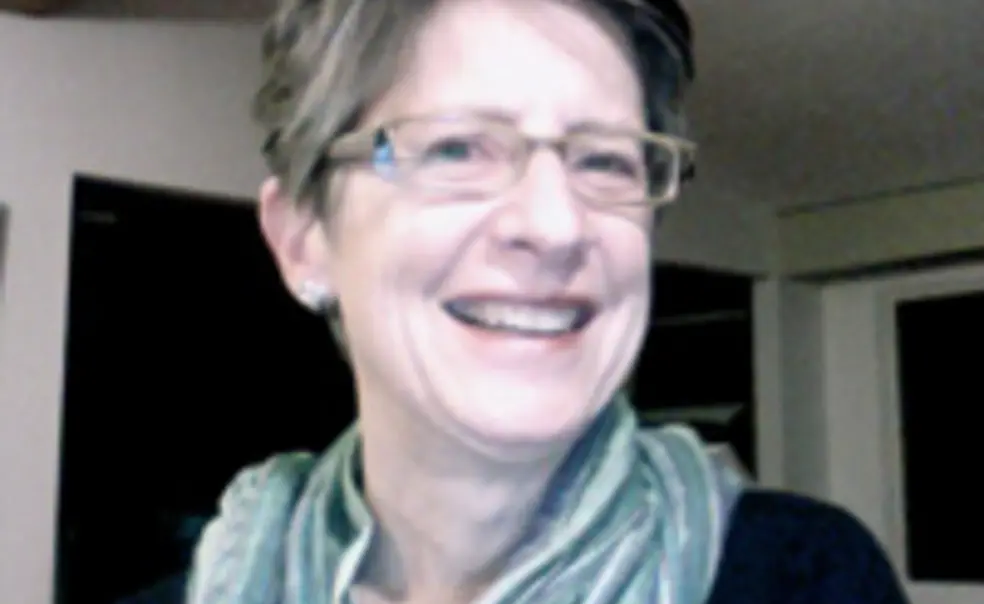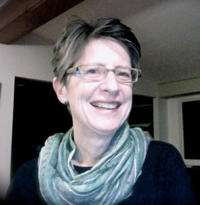Chickens have a lot to do with human beings and how we create meaning, says Susan Merrill Squier ’72, whose book, Poultry Science, Chicken Culture: A Partial Alphabet (Rutgers University Press), uses chickens as a lens into topics ranging from art to biology and political discourse. A professor of women’s students, English, and acting director of the Science, Technology, and Society Program at Penn State University, Squier knows chickens up close — she raises them. In this collection of essays, she looks at why individuals are so fascinated with the humble bird by exploring the ways people “work with, write about, draw about, make art about, and do science with” chickens. Squier (who blogs at http://chickscholar.blogspot.com) spoke with PAW’s Katherine Federici Greenwood.
Can you give an example of what you cover in one of your essays?
Each chapter has the letter of the alphabet and the title of the chapter indicates my way into thinking about what humans and chickens have meant to each other. So “A” is for [the first chapter] ‘Augury.’ It investigates the idea that goes way back to the Romans that we could tell the future from looking at the innards of chickens. And it moves from there to think about the kinds of knowledge that we have lost because of the changes in the way we farm — but more broadly because of changes in the ways we think about what counts as knowledge, as knowledge has gotten cut up into the disciplines.
I use a children’s book, Chicken World, written in 1910, as a way [to look at] how things have shifted now that we’ve moved to industrial farming. Then I talk about a Ray Bradburystory, The Inspired Chicken Motel, which looks at the move toward big chicken farming during the depression — how that has changed our understanding of the relationship between the farmer and the chicken and the farmyard. The book works deliberately across different disciplines to bring ideas together.
Do you think that the shift from local farming to industrial farming has been detrimental for society?
I make an argument, but it’s not as simple as I thought it would be at the beginning. At the beginning I really thought it would be: Industrial farming is awful, and anybody who works in that system is horrible. But then I got to know the people who work in the poultry science program at Penn State and I learned more about it. So the book is much more about saying we really need to think carefully about what we’re doing when we take all of that activity around raising our food and outsource it and put it out of sight and out of mind. The process of industrial farming of chickens and slaughtering is brutalizing not just to the chickens but also to the people who work in the factories. One chapter looks at what happens to relationships between human beings when we farm this way.
What were some of the most surprising things you found out as you researched your book?
[I found] these graphic designers in England who studied at the Royal Academy of Art and Design then formed this company that is selling high end, beautifully designed portable chicken coops. And I found a portrait photographer named Jean Pagliuso,who I happened across because she exhibited at this very tony gallery just off Fifth Avenue. She used to take pictures of movie stars. But her most recent works are beautiful, stunning portraits of chickens.
Maybe my best experience doing this book was when I went to Belgium to interview this amazing artist named Koen Vanmechelen, who is doing something he calls “the cosmopolitan chicken project.” He has shown all over the world. He is doing visual art ranging from painting to photography to glass blowing and sculpture and video art relating to chickens, while engaging in a 12-year long breeding project to breed the national chickens of a whole range of countries with the chicken that is the classic chicken of Flanders. He’s Flemish. He wants to create what he calls the cosmopolitan chicken. I have a chapter on his project.
What is it about chickens that has people making art about them and writing about them?
There’s a sense that the chicken is very deeply involved in our sense of what it is to be human. We use them almost as a stand in for the human. Kids start learning about chickens really young and we have more expressions than any of us could even count that take chicken behavior as human behavior [such as] “running around like a chicken with its head cut off.” The chicken is our metaphor for ourselves. [But] we don’t always realize how much knowledge and truth and wisdom there is in [the chicken]. So it’s just fun to see what you can learn by taking the chicken and following out where it goes because it teaches you a whole lot about people.
What have chickens taught you?
The book begins and ends with me meditating. The more I have had chickens the more meditating seems just like what the hen does. And it has really taught me the value of just slowly sitting with experience and learning from experience. And to not so much make snap judgments. If you are an academic, you have been trained to be a judge, a critic, and to have opinions. So chickens have taught me to loosen up, lighten up, not judge so quickly, and have fun with something. You have to be able to be slightly ridiculous keeping chickens because people will think you are.














No responses yet